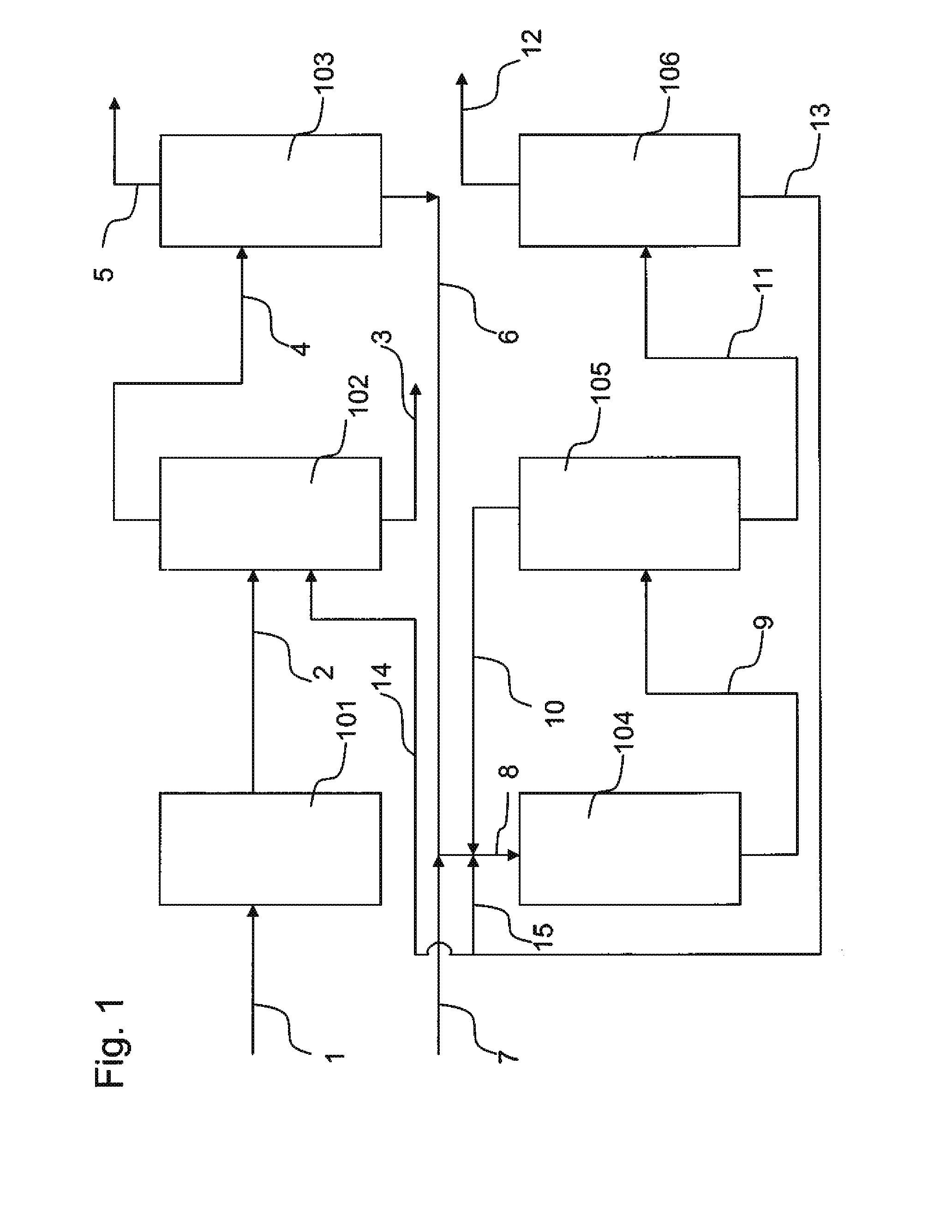Production of 1-Butene and Propylene From Ethylene
- Summary
- Abstract
- Description
- Claims
- Application Information
AI Technical Summary
Benefits of technology
Problems solved by technology
Method used
Image
Examples
example
[0028]A method for practicing the invention is shown in FIG. 1. Ethylene, along with a catalyst (nickel bis(triphenylphosphine) octanoate, 0.006 kg / min, and ethyl aluminum dichloride, 0.004 kg / min, is fed to a dimerization loop reactor 101 via line 1. The loop reactor is described in U.S. Pat. No. 4,242,531. A solution of the catalyst in hexanes may be used. The dimerization reactor is operated at a pressure of 200 psig and a temperature of from 40 to 65° C.
[0029]The reaction mixture exits reactor 101 and is contacted with a dilute (5%) caustic solution, then washed with water (not shown). The washed dimerization mixture enters butenes fractionation column 102 via line 2. Column 102 has 13 theoretical plates and is operated under a pressure of 78 psig and at a temperature of 125° C. at the bottom of the column and at 49° C. at the top of the column. Light components including ethylene, 1-butene, and 2-butenes are separated as an overhead in line 4 and a heavy fraction containing hex...
PUM
| Property | Measurement | Unit |
|---|---|---|
| Fraction | aaaaa | aaaaa |
| Fraction | aaaaa | aaaaa |
| Mixture | aaaaa | aaaaa |
Abstract
Description
Claims
Application Information
 Login to View More
Login to View More - R&D
- Intellectual Property
- Life Sciences
- Materials
- Tech Scout
- Unparalleled Data Quality
- Higher Quality Content
- 60% Fewer Hallucinations
Browse by: Latest US Patents, China's latest patents, Technical Efficacy Thesaurus, Application Domain, Technology Topic, Popular Technical Reports.
© 2025 PatSnap. All rights reserved.Legal|Privacy policy|Modern Slavery Act Transparency Statement|Sitemap|About US| Contact US: help@patsnap.com

